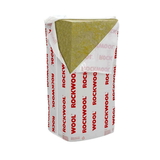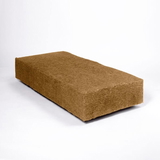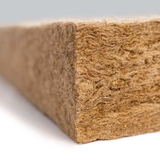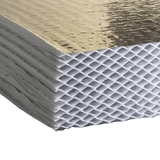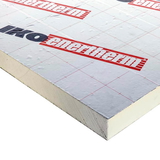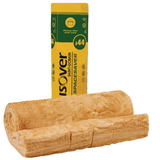- Blogs
- Roof Insulation - A Buyer's Guide
Roof Insulation - A Buyer's Guide

Roof insulation can cost you money, but it can also protect your home from heat loss, extreme temperatures, wind and more. Adding a layer of insulation to your roof or lofts can definitely save you money in the long run.
For roof insulation, you have many options to choose from, including cellulose, fibreglass, foam insulation boards, foil insulation etc. In this blog, we will discuss the pros and cons of each of these roof-insulating materials to help you pick the right fit for your home.
The type of roof insulation you choose depends heavily on the type of roof you have. Primarily in the UK, roofs can be either flat or pitched.
1) Pitched Roof:
If you have a pitched roof, you can either opt for cold-pitched roof insulation, or warm-pitched roof insulation, depending on how you wish to use the loft space. Let's discuss these in detail:
1: Cold-Pitched Roof Insulation
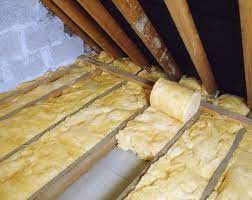 It is also referred to as loft insulation. Loft insulation rolls like Knauf loft 44 or Superglass multi-roll 44 are easy-to-install insulation a roll. These insulation products are simply laid between and over the ceiling joists. Fibreglass loft insulation needs to be about 270 - 300mm thick, to effectively reduce heat loss according to the building regulations.
It is also referred to as loft insulation. Loft insulation rolls like Knauf loft 44 or Superglass multi-roll 44 are easy-to-install insulation a roll. These insulation products are simply laid between and over the ceiling joists. Fibreglass loft insulation needs to be about 270 - 300mm thick, to effectively reduce heat loss according to the building regulations.
Insulation on a roll is very easy to install and quite cheap compared to insulation boards, foil insulation, etc. The money spent on these loft rolls can be easily recouped in a couple of months.
You can buy loft insulation online or through local insulation suppliers or retailers. There are several loft insulation grants made available through the government. It is estimated that you lose nearly 15-20% of heated air through an uninsulated loft, which can be easily prevented using these fibreglass loft rolls.
Loft insulation rolls block heat or energy from escaping your living room, but do not keep your roof warm. That is, your loft spaces can get chilly in the winter and hot in the summer.
2: Warm-Pitched Roof Insulation:
If you want to use your loft as an office or as an extra bedroom, then warm roof insulation is the way to go. In this case, the insulation is placed in between, over or under the roof rafters.
For warm roof insulation, you can use mineral wool insulation batts like RWA45, Knauf Rocksilk RS45, PIR boards, foil insulation rolls and others. Warm roof insulation will keep your roofs warm, comfortable and cosy. Just ensure you have adequate ventilation in place.
2) Flat Roof Insulation:
If your roofs have a pitch of fewer than 10 degrees, they are considered flat roofs. Much like pitched roof insulation, insulating a flat roof also brings in many benefits, like reduced heat loss, lower energy bills and cosy, comfortable home.
Flat roofs can again be insulated based on your requirement;
1: Cold Flat Roof Insulation:
For cold flat roof insulation, insulation materials are placed beneath or between the timber rafters. This is quite an outdated method of insulating flat roofs, as it usually leads to condensation issues when proper ventilation is not in place.
Cold flat roofs can be insulated using rigid insulation boards like PIR, or loft insulation rolls, which are easy to carry and install between timber rafters. However, a vapour barrier is a must to keep condensation and other moisture-related issues away.
2: Warm Flat Roof Insulation:
Insulation boards like PIR or extruded polystyrene insulation boards are an ideal choice for flat roof insulation. They give good thermal insulation and are moisture-resistant insulation boards.
Warm roof insulation is when you place an insulating material above timber rafters. This is not a DIY job, better left to professional insulation installers. Installing warm flat roof insulation has several advantages. It prevents dampness and rot by allowing moisture to escape and is regarded as the best roof solution in the UK.
Common Roof Insulation Materials Include
1) Cellulose Insulation
Cellulose roofing insulation is a great choice for a variety of reasons. Not only does it help improve the quality of indoor air in your home, but it can also protect you from fire hazards. It is environmentally friendly as it is made from recycled materials.
Cellulose insulation is usually manufactured by hammer-milling waste newspaper and is treated with chemicals to prevent the spread of fire. Cellulose roofing insulation is its ability to soundproof. This material is three times denser than fibreglass, which helps reduce the sound travelling through different rooms in a home.
A disadvantage of cellulose roofing insulation is its short lifespan. Cellulose will need to be replaced within 20 to 30 years after installation. It is also not waterproof, so water damage can damage the material and reduce its K-value.
2) Fibreglass Insulation:
Fibreglass insulation on a roll is one of the cheapest and easy-to-install roof insulation materials. As discussed above, it can be used for cold roof insulation in both flat and pitched roofs.
Fibreglass insulation rolls are lightweight, easy to handle, and have a low K-value per square meter. Glass mineral wool insulation is made of very fine glass fibres, which are made with recycled glass. It is environment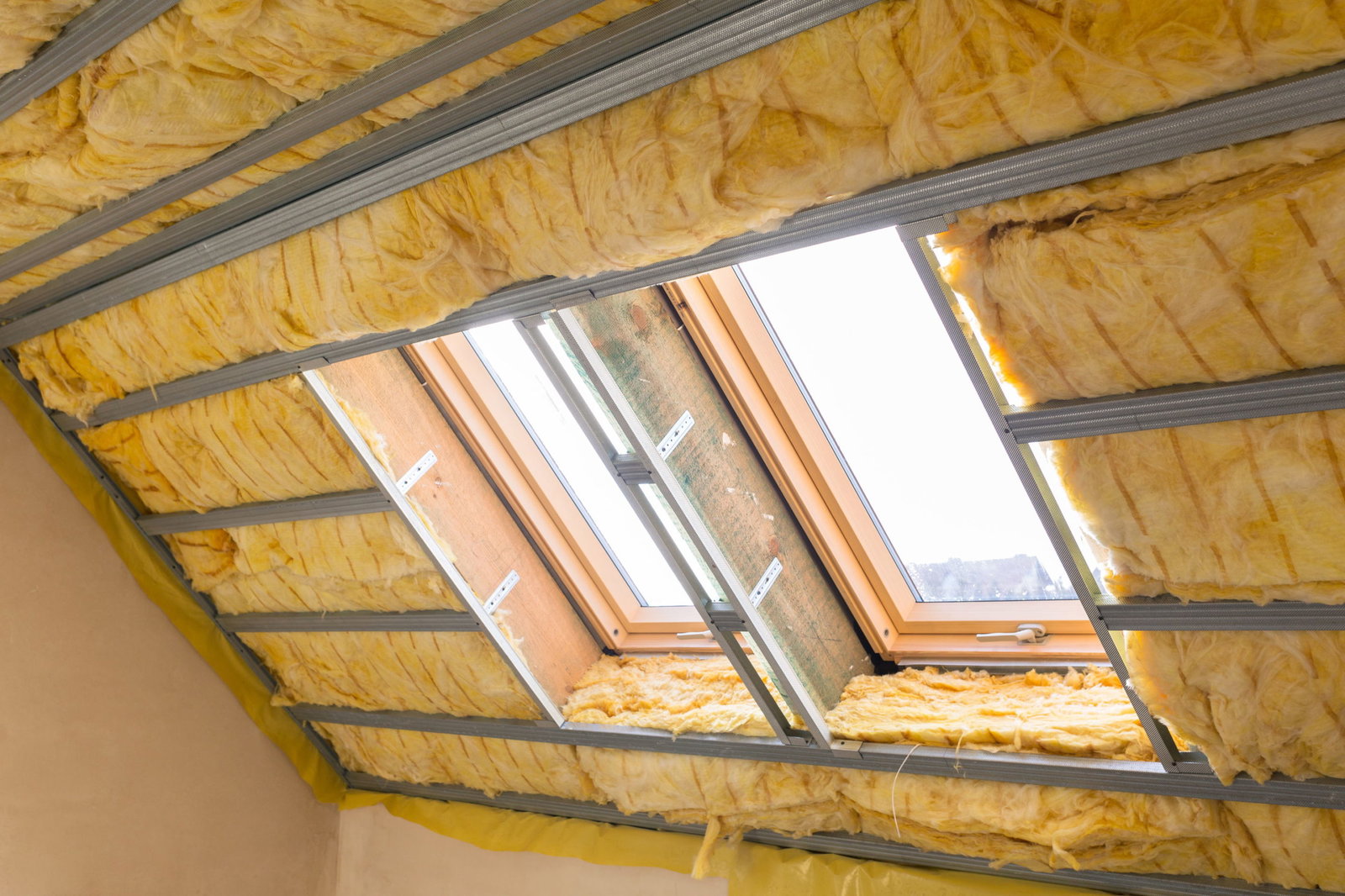 ally friendly insulation on a roll.
ally friendly insulation on a roll.
These high-density fibreglass rolls also give superior acoustic insulation and fire resistance. Fibreglass insulation is a smart choice for homes in humid climates as it does not absorb water and is hence, resistant to mould and vermin growth.
The major disadvantage of fibreglass insulation is that its tiny glass fibres could come loose during installation or when insulation is disturbed. Fibreglass insulation is known to cause skin irritation and infections in the respiratory tract. Also, if this insulation on a roll becomes wet, their K-vale gets affected resulting in lower thermal efficiency.
3) Mineral Wool Insulation Batts:
Mineral wool batt insulation can be used between roof rafters for warm roof insulation. At Buy Insulation Online, we store premium insulation batts like RWA45, Rocksilk RS45 and more, which have a lower K-value. Not only that, since they are made of high-density mineral wool, they also give superior sound insulation.
Mineral wool insulation batts are about 1200mm in length and 600mm wide. They come in various thicknesses ranging from 25mm to about 200mm, perfect for any roof insulation application.
Insulation slabs are resistant to moisture and hence do not support mould growth. These friction-fitting insulation slabs fit perfectly between roof rafters, leaving no gap in the application. They reduce energy bills and keep your roofs warm and cosy.
The main disadvantage of batt insulation is that they are thicker compared to insulation boards and hence take much space. Also, since they are not waterproof, if they get wet, much like fibreglass insulation rolls, their thermal efficiency decreases.
4) PIR Insulation Boards:
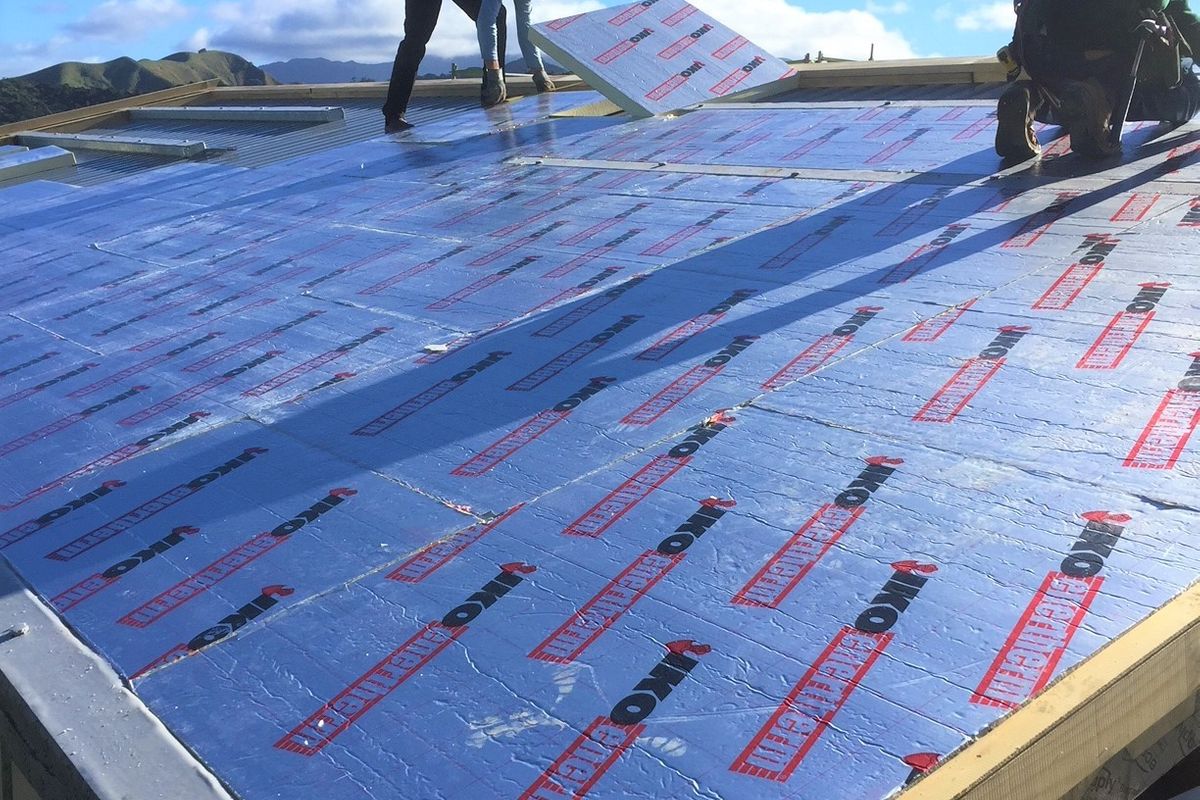 PIR insulation board is a versatile roof-insulating option. It can be used to insulate pitched and flat roofs. PIR is made of polyisocyanurate and has a K-value as low as 0.022 W/mK, which means it is the most effective in restricting heat loss among other insulation materials.
PIR insulation board is a versatile roof-insulating option. It can be used to insulate pitched and flat roofs. PIR is made of polyisocyanurate and has a K-value as low as 0.022 W/mK, which means it is the most effective in restricting heat loss among other insulation materials.
PIR insulation boards also have low-emissivity foil-facings on either side which reflect radiant heat and also act as a moisture barrier. A standard PIR insulation board is about 2.4m long and 1.2m wide. They are also available in thicknesses ranging from 25mm to about 200mm.
ot just roof insulation, PIR boards are also a popular choice for wall insulation, floor insulation, cavity walls and more. They can be used in retrofit and new builds alike. They comply with building regulations and help you achieve low U-values in any application. At Buy Insulation Online, we stock Celotex PIR boards, Iko and Xtratherm brands.
PIR insulation boards, however, do not offer much in terms of fire insulation. The installation process can get messy with dust and waste.
5) Extruded Polystyrene:
Extruded polystyrene boards are best used for floor insulation applications, however, they are also perfect for flat roof insulation. These insulation boards have a low K-value and high compressive strength. They are not affected by moisture easily. They are cheap compared to PIR insulation boards and are lightweight.
Much like PIR insulation boards, extruded polystyrene also does not give much fire insulation. They have a Euroclass rating of E or F.
5) Insulated Plasterboard:
Insulated plasterboards can be used to insulate flat roofs, on warm roof applications. At Buy Insulation Online, we stock PIR insulated plasterboards like Celotex PL4000, and Xtratherm Thermal Liner and Polystyrene insulated plasterboards like Knauf XPS Thermal laminate and EPS thermal laminate.
These insulated plasterboards save space and effectively reduce heat loss through roofs. They are, however, expensive compared to extruded polystyrene.
6) Foil Insulation:
 Foil insulation rolls can be used below, over or in between rafters. They are thin, lightweight insulation on a roll made of aluminium foil. Foil rolls work differently compared to wool insulation or insulation boards, by reflecting radiant heat to the source.
Foil insulation rolls can be used below, over or in between rafters. They are thin, lightweight insulation on a roll made of aluminium foil. Foil rolls work differently compared to wool insulation or insulation boards, by reflecting radiant heat to the source.
Foil insulation not only maintains a warm cosy loft space in winter but also helps keep cool in summer. These insulation rolls help you achieve your desired U-values easily.
At Buy Insulation Online, we stock Actis hybris foil insulation panels, which can be used for insulation between rafters. Other than these, we also stock foil insulation rolls from YBS Super quilt and Superfoil, which can be used to insulate both pitched and flat roofs. Foil insulation rolls are quite expensive compared to other forms of insulation.
Phenolic foam
Phenolic foam roof insulation was developed in the early 80s in response to the energy crisis and regulations requiring lower K-values for roof insulation. It was designed to provide greater insulation efficiency and fire resistance without requiring complete re-roofing. In addition to being an excellent insulator, phenolic foam is also resistant to fire. Its fire rating of Euroclass B makes it suitable for use on newbuild and ventilated roofs.
The product was a great success in the short term. The main issue with phenolic foam roof insulation is that it shrinks significantly after curing, sometimes up to 2%. This can result in significant air leakage and heat transfer. Because of this, phenolic foam insulation may need to be reapplied after the initial material has been set.
In Conclusion:
Without proper roof or loft insulation, you can lose as much as 20-25% of heat, something none of us can afford, given the steep rise in energy prices and the energy crisis. By insulating roofs and lofts, you not only save energy and improve the EPC ratings of your home but also help the UK achieve its carbon neutrality goal, in a small way.
For premium loft insulation on a roll, insulation boards and foil insulation products, visit Buy Insulation Online. We also specialise in technical insulation products like pipe lagging, ductwrap, duct insulation boards, valve insulation jackets and so on. With every order, we place a tree in your name for free and also protect five trees in the amazon.

Samuel Hitch
Managing Director
Buy Insulation Online.
Leave A Reply
Your feedback is greatly appreciated, please comment on our content below. Your email address will not be published. Required fields are marked *










